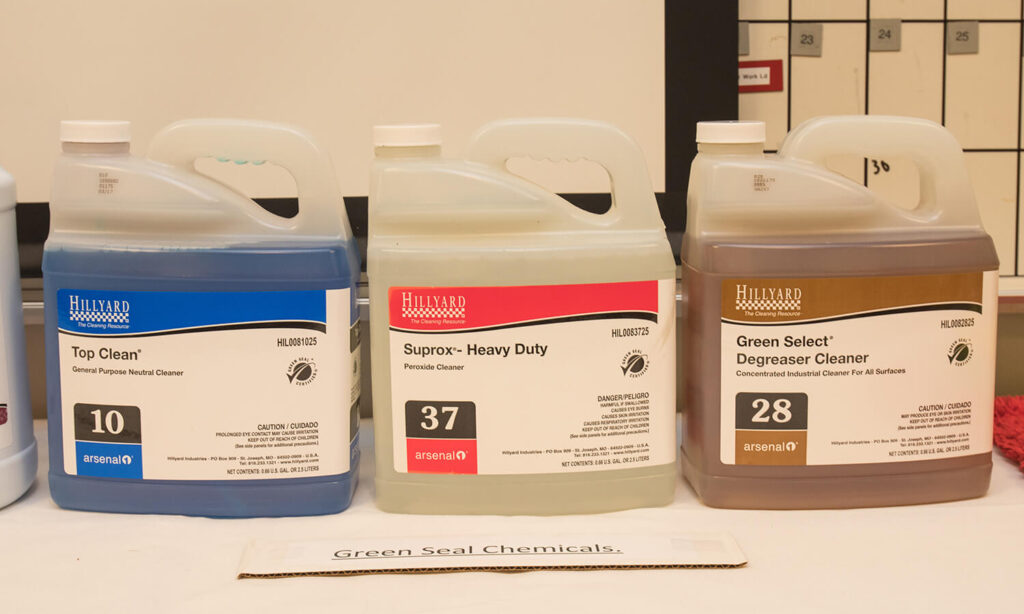Green Cleaning
Sustainable Cleaning Practices
The Cleaning Cost Analysis Program (CCAP) was introduced to the UMass Dining Commons, University Club, Hampden Bake Shop, and Campus Center dining locations in 2015. This program works to maintain the cleanliness of UMass Dining buildings while creating a healthy, eco-friendly, nontoxic built environment. CCAP prioritizes the key factors mentioned below:
1. Cleaning for health while protecting the environment
1.1. Environmentally Responsible Chemicals and Equipment
UMass Dining works to create a healthy physical environment for staff and students while reducing our environmental impact. Four chemicals are used daily throughout UMass Dining’s facilities. Three of these four chemicals are Green Seal Certified. The chemical that is not Green Seal Certified is Phosphate free and has a neutral Ph, reducing the health risk and environmental impact of the chemicals. Several types of cleaning equipment are used by our staff to benefit workers and the environment. One example is the Proteam Backpack vacuum, which contains four filters and is generally used to clean all dining locations on a daily basis. The multiple filters in the vacuum ensure that our spaces and air are as clean as possible.
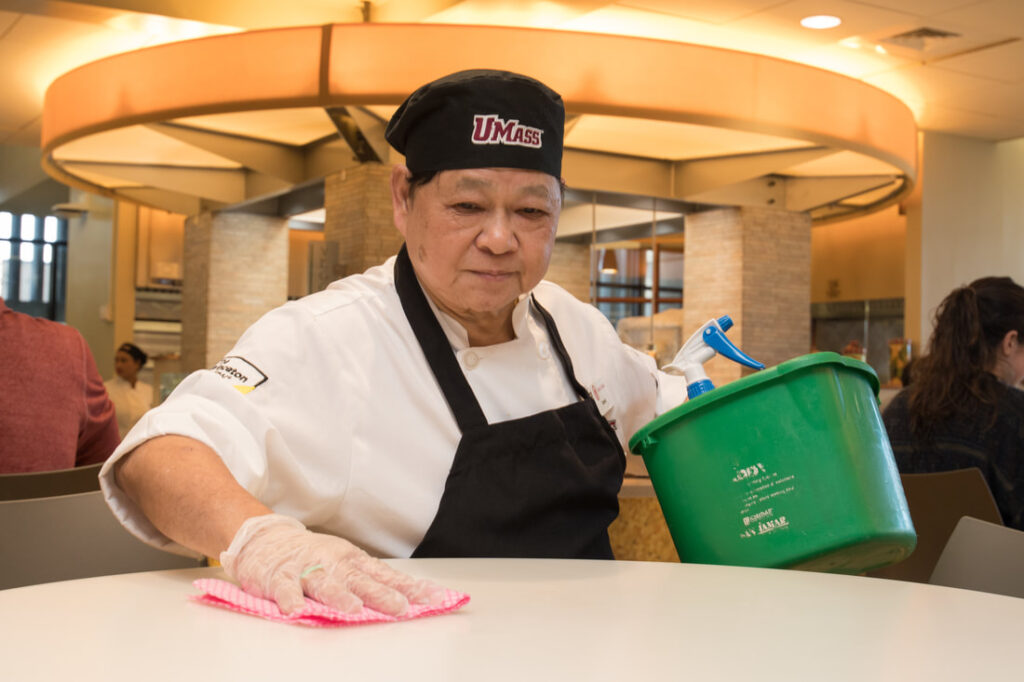
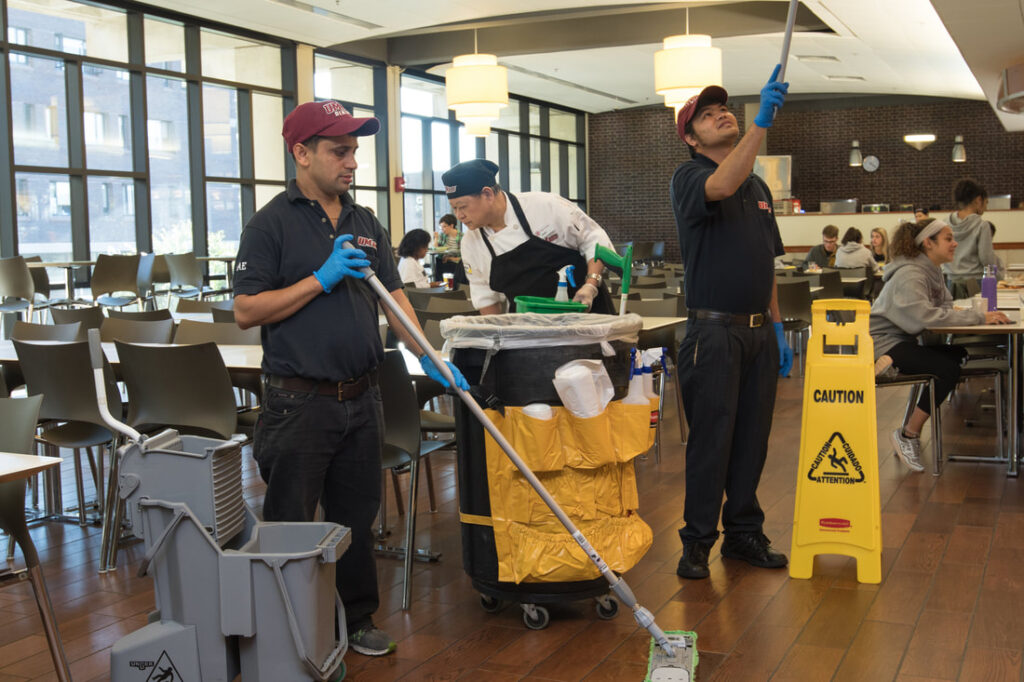
1.2. Worker Training
Our cleaning crew is trained periodically at Berkshire Dining Commons to ensure that their knowledge is up to date. This training helps workers to identify chemicals, tools, and correct work practices so that they are able to utilize them safely. They are trained on the characteristics of each chemicals they are being exposed to and the importance of using personal protective equipment. This training ensures that all workers know how to protect themselves and the environment while working for UMass Dining.
2. Safe Cleaning Practices
2.1. Packaging of Chemicals
Chemicals are no longer individually packaged to reduce our amount of plastic waste. All chemicals are automatically measured and distilled to prevent the mixing or misuse of chemicals. This protects both workers and customers from exposure and contact to concentrated toxins. Chemicals are also color and number coded to make them easily identifiable and assure the correct use of chemicals.
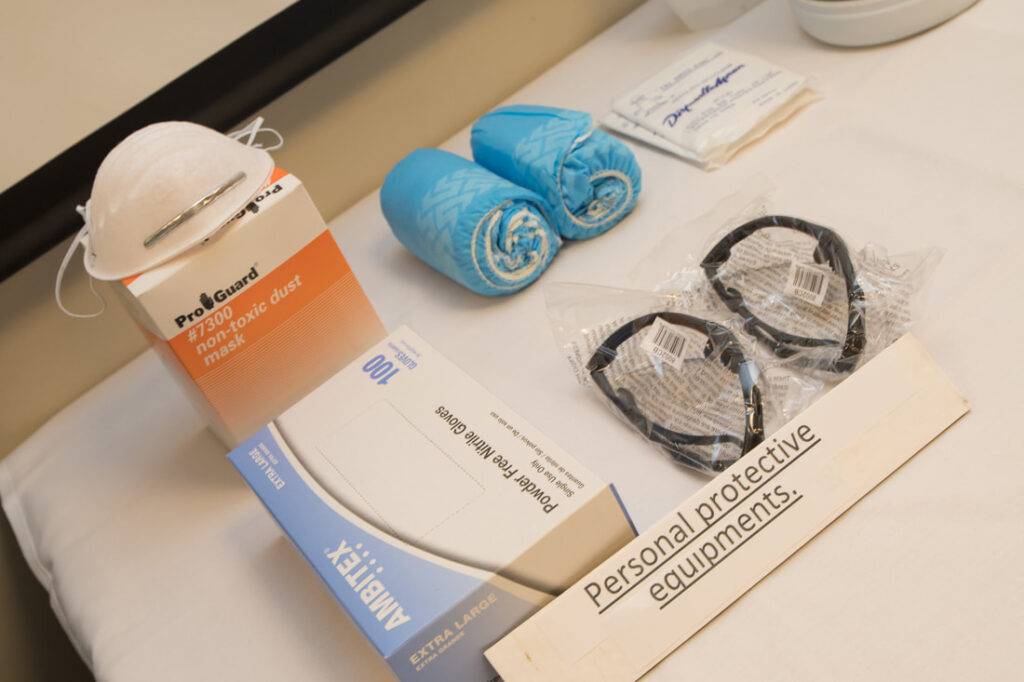
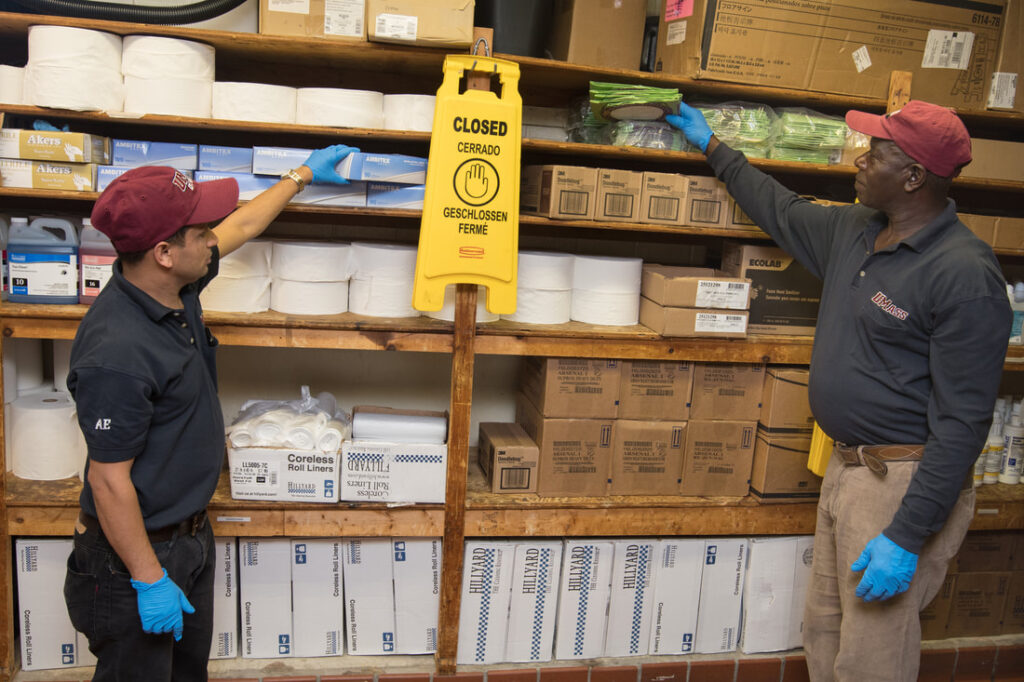
2.2. Ergonomic Aspect of Tools
Equipment and tools are designed to improve the quality and safety of our janitorial staff’s work. Personal Protective Equipment, including gloves, goggles, aprons, shoe covers, and masks improve the safety of workers. Dollies for trash barrels are used to assist workers by providing space to easily transport their spray bottles, towels, and trash can liners and efficiently and safely dispose of trash. Restroom carts, double sided mop buckets, and other tools help workers carry chemicals and other equipment from one restroom to another and prevent cross contamination.
3. Correct Waste Disposal and Recycling
Disposal and Recycling
The UMass Dining Janitorial team works hard to dispose of hazardous waste carefully and correctly. This includes the reduction of waste and an increase in recyclable and reusable materials. Any applicable materials are meticulously recycled and chemical containers are cleaned thoroughly before being disposed of. Chemicals are automatically proportioned to minimize their use and reduce waste. We use microfiber flat mops instead of traditional “string” mops and two sided mop buckets to reduce water usage.
